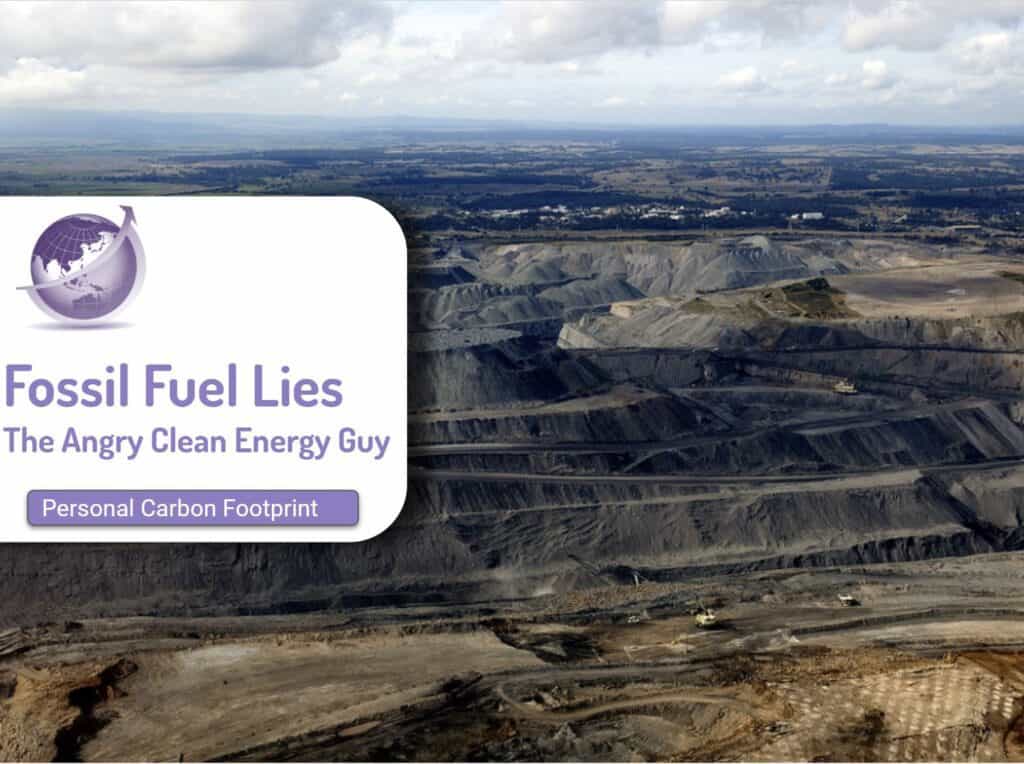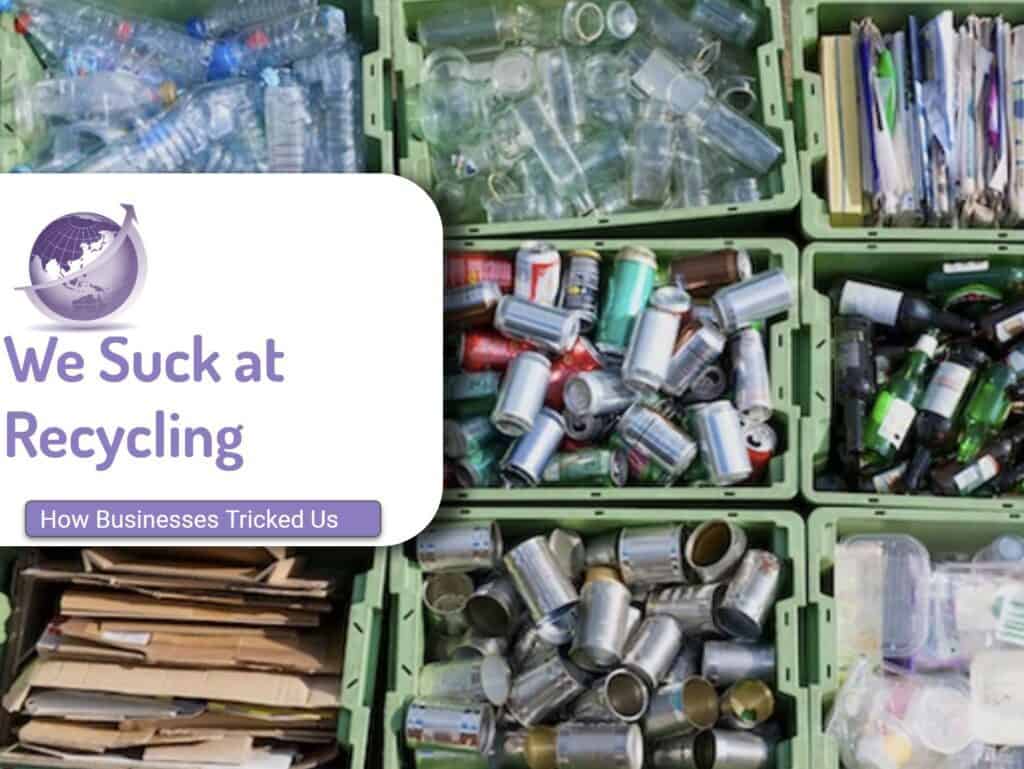Wartsilar, better known for shipping engines released a white paper modelling 97% or 100% for net zero by 2050,[1] in January 2025 and not long after RethinkX and Prof Tony Seba release their latest modelling on abundant energy [2] where they say that 100% energy is entirely possible from the equator to the poles.
Meanwhile Prof Mark Jacobson [3] has been saying since 2003 that 100% renewable energy in 145 countries is both possible and financially viable.
Wartsilar fails the fossil fuel argument and keeps about 12,000 TWh of generation in the mix – albeit for just 3% of the electricity generation. The world demands 100% zero emissions, not net zero.
Why the Argument about 97% or 100% for Net Zero
Solar, Wind and Battery is the cheapest electricity generation. The reason is simply that the majority of the cost is capital cost at the start of the project and very low operating costs, principally cleaning, maintenance and insurance.
ARENA in Australia has an investment and R&D and commercialisation program to have 30/30/30 solar. [4] That is
- 30% panel efficiency
- 30c per kWh of electricity installed
- By 2030
Programs with B-Solar using robotics to drive mounting supports, robotics to assemble panels for rapid deployment as well as the work in major solar manufacturers globally see that being exceeded and the cost come down from current $1.00/W in most countries. Rooftop solar is often up to $3/W
The outcome is to bring the cost of electricity to under $US15 ($AU20) per Megawatt hour (MWh) at a wholesale level. Even using 2 to 4 day storage at 5c kWh At that price, nothing comes close.
Duankelflaut
The challenge are the few days of the year when electricity generation from solar or wind is low and there are finite levels of batteries, and augmented with hydroelectric power. These short periods of “Dunkelflaute,” a German term, translates to “dark doldrums” or “dark lull.” It refers to a period of time with minimal or no sunshine and wind, leading to reduced wind and solar power generation, particularly during winter months. This phenomenon poses challenges to electricity supply in systems heavily reliant on renewable energy sources. How much is open to conjecture and north south transmission lines will reduce the lack of supply and we see transmission grids expansion.
The difficulty is that this a short period of time. Some, such as Dr David Osmond who has modelled Australia says that this period of time can be most resolved by sufficient storage – for the Australian NEM, it is about 24 GW and 120 GWh duration. [5] Even in this model, demand is met by “other”. Is that gas? Is that hydrogen, or demand management? This assumes that there is no spare capactity to transmit the shortfall, or have sufficient storage. Each country has this issue. It is the insurance dilemma of electricity supply.
Osmond also has assessed how much additional battery or generation is needed to halve the potential “gap” and says that 60% more of wind and solar would increase supply from 98% to 99%.
1% is still 3 days per year. Note that there is electricity, just not enough to meet 100% of demand.
Wartsila Says 97% is The Cheapest
In Wartsila White paper and in a podcast on Cleaning Up with Michael Liebriecht in May 2025 [6]. Lindberg claims from their models, less than 3% annual generation is needed. They say their gas engines (think marine engines but bigger) and running on gas, or diesel are the cheapest. Compared with a 100% renewable and storage pathway from 2025 to 2050.
- This 3% is only about 2GW for a country such as Finland or Chile.
- Has 11TW of solar installed – same as with 100% up to 2035
- Achieves net zero faster and more cost-effectively
- Projected savings of over 42% (EUR 65 trillion),
- 21% lower emissions
- Half the land use for renewables from 2025 to 2050.
- Less curtailment of solar electricity
- Has over 12,000 TWh of gas use

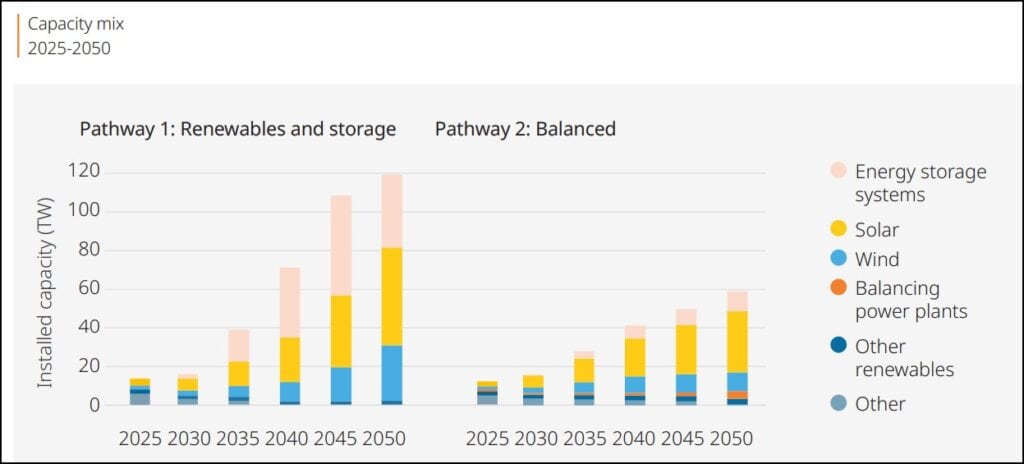
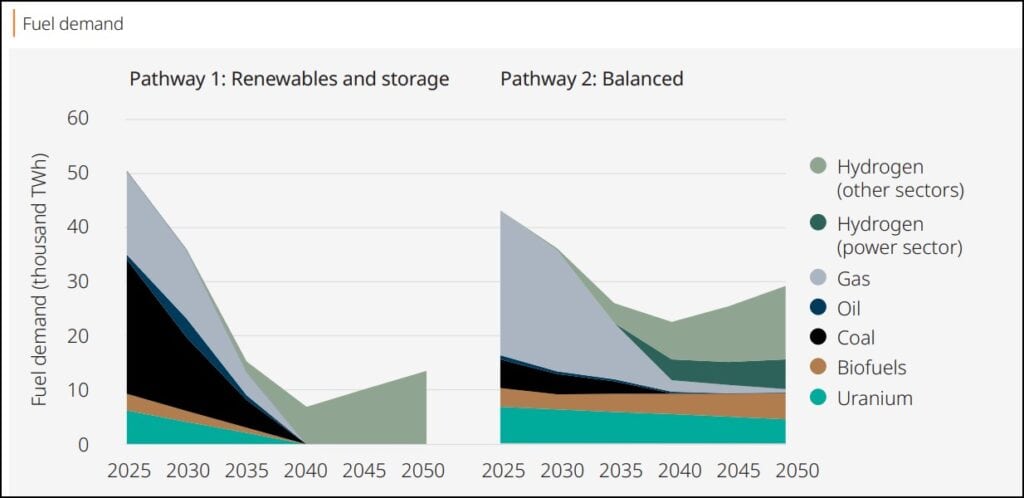
Prof Mark Jacobson says 100%
Jacobson has stated that the world can transition to 100% renewable energy by 2035 using wind, water solar and batteries. With the decreasing cost of batteries, BESS (battery energy storage systems) will expand from 2 hours to 4 hours to over 20 hours. The decreasing cost of batteries and solar will enable sufficient storage for the Dunkelflaut instances, which occur every 2 or 3 years, and can be managed by demand management. Demand management is where large users of electricity stop using electricity, in things such as aluminium smelters, iron ore furnaces and down to the level of turning down or up temperatures set on air conditioning.
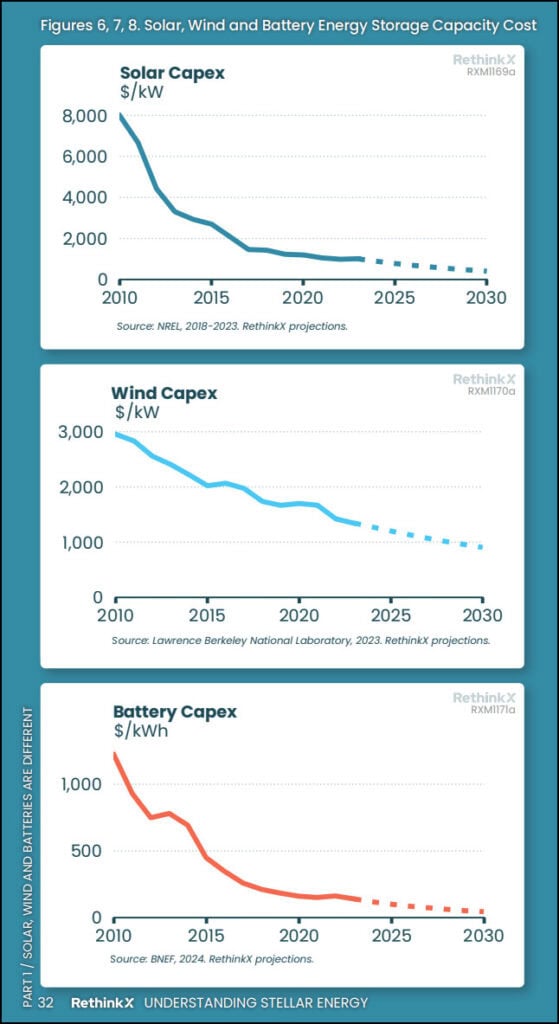
Stella Energy by RethinkX and Tony Seba says 500%
RethinkX has always proposed Super Abundant electricity and termed this Stella Energy/. [2]. Asa they point out, CAPEX for renewable energy is a prepayment for 50 years of free electricity.
RethinkX has no fossil fuel left in the mix. Hydro, nuclear and biofuels will remain in the system as the renewable energy approaches 100% and then is retired from then on.
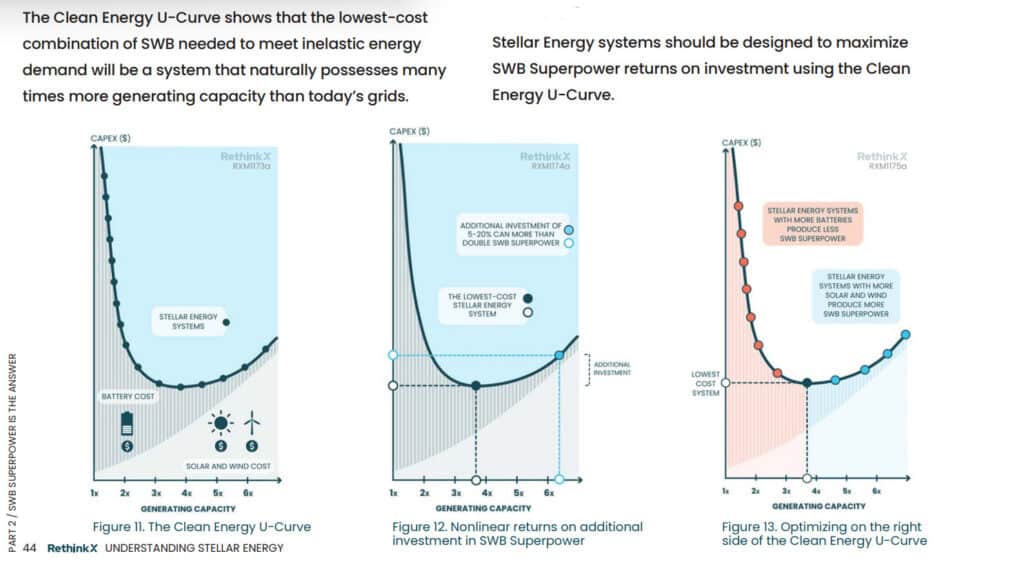
Figure 5: Stella energy from RethinkX shows costs for additional generation are small for large increase in supply.
No Nuclear
None of these 3 models suggests nuclear has any role. It is expensive. Too late to be developed. Some say that nuclear plants should run out to the end of their lives, but when you consider solar may be $20/MWh and nuclear is over $100/MWh, all that happens is subsidisation of nuclear by consumers.
References
[1] ‘Choosing the optimal pathway for energy transition’, Wartsila.com. Accessed: Jun. 08, 2025. [Online]. Available: https://wartsila.prod.sitefinity.fi/energy/towards-100-renewable-energy/choosing-the-optimal-pathway-for-energy-transition
[2] ‘The Dawn of Stellar Energy: Announcing RethinkX’s “Understanding Stellar Energy” Report’. Accessed: Jun. 08, 2025. [Online]. Available: https://www.rethinkx.com/blog/rethinkx/understanding-stellar-energy-is-here
[3] Mark Jacobsen, ‘Low-cost solutions to global warming, air pollution, and energy insecurity for 145 countries – Energy & Environmental Science (RSC Publishing)’. Accessed: May 06, 2024. [Online]. Available: https://web.stanford.edu/group/efmh/jacobson/Articles/I/145Country/22-145Countries.pdf
[4] ‘The incredible potential of Ultra Low-Cost Solar in Australia – Australian Renewable Energy Agency (ARENA)’. Accessed: Jun. 08, 2025. [Online]. Available: https://arena.gov.au/news/the-incredible-potential-of-ultra-low-cost-solar-in-australia/
[5] ‘A near 100 per cent renewables grid is well within reach, and with little storage | RenewEconomy’. Accessed: May 03, 2024. [Online]. Available: https://reneweconomy.com.au/a-near-100-per-cent-renewables-grid-is-well-within-reach-and-with-little-storage/
[6] ‘Can You Run a Grid Entirely On Renewables? Ep208: Anders Lindberg’, Cleaning Up. Leadership in an Age of Climate Change. Accessed: Jun. 08, 2025. [Online]. Available: https://www.cleaningup.live/can-you-run-a-grid-entirely-on-renewables-ep208-anders-lindberg/



